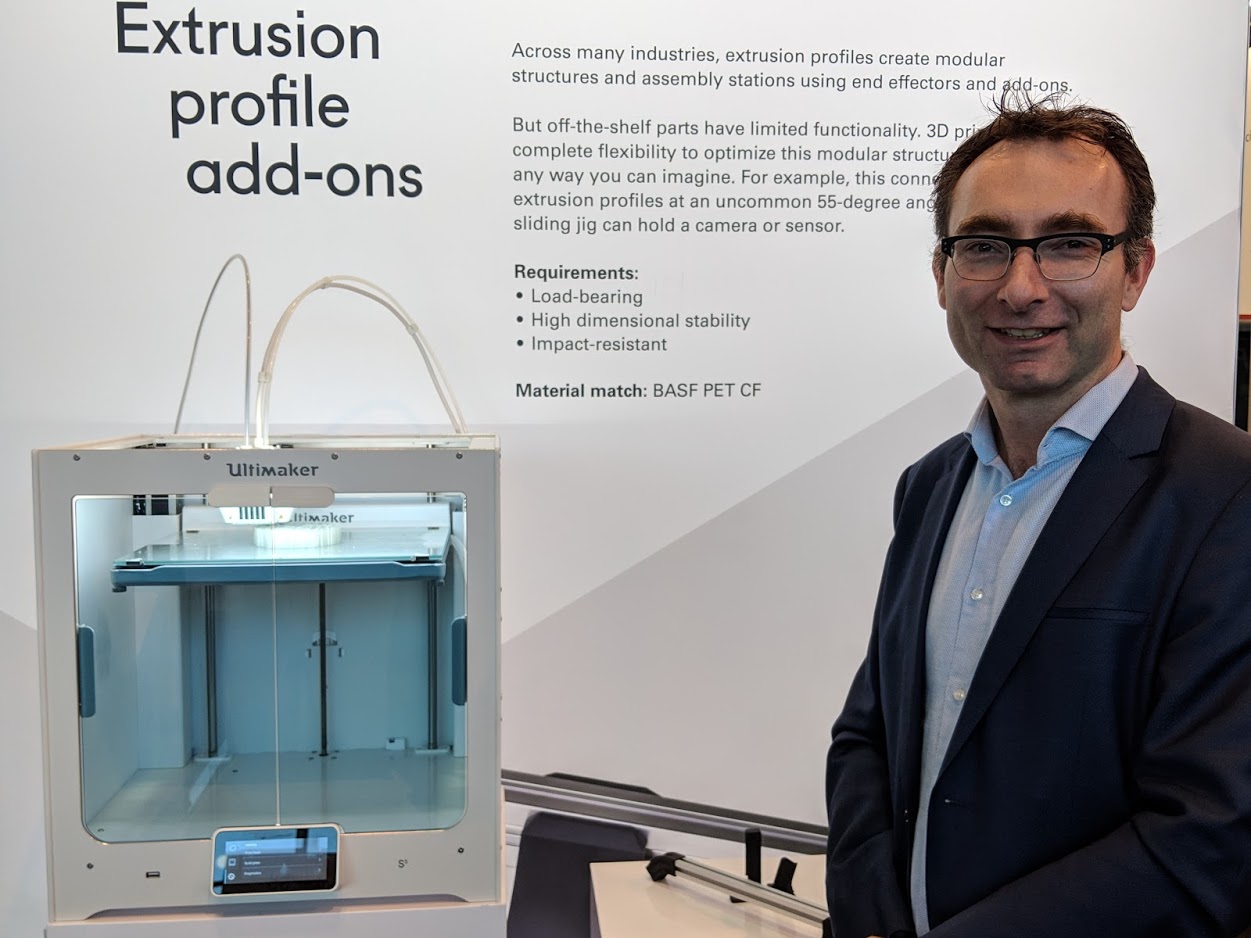![Siert Wijnia, Co-Founder and CTO, Ultimaker at formnext 2018 [Image: Fabbaloo]](https://fabbaloo.com/wp-content/uploads/2020/05/IMG_20181113_152641_img_5eb0a1a48694a.jpg)
From hobby to profession, from toy to tool, 3D printing is growing up — and Dutch desktop 3D printer mainstay Ultimaker is not only watching that growth, but helping to drive it.
When I chatted with Siert Wijnia at formnext, the company co-founder and CTO was keen to share not only the latest news from Ultimaker, but a look into how the industry has been maturing.
The day of our conversation, Ultimaker announced the availability of material print profiles from third party companies. The next day, the company announced ISO certifications. These two moves are indicative of a maturing mindset at Ultimaker — as well as a maturing industry in which the company works.
In September, Ultimaker introduced profiles for DSM and Owens Corning materials, along with a new print core. Building upon those TCT Show announcements, at formnext the material print profiles expanded for Ultimaker Cura 3.6, as together with BASF, Clariant, DSM, and DuPont Ultimaker held a press conference to share the first results of its Ultimaker Material Alliance Program.
“Today we announced our third party program for materials. We are open since the beginning, and focusing on applications. For a specific purpose, you need the right material for each or it will not work,” Wijnia told me. “Now materials from DSM, Owens Corning, Clariant, BASF, and DuPont are all tuned for our S5. We created this software tool internally, and it looked good enough that we took it external. We are all for taking away as many hurdles as possible.”
![[Image: Fabbaloo]](https://fabbaloo.com/wp-content/uploads/2020/05/ultimaker-materials-1_result_img_5eb0a1a5202b0.jpg)
As they take down those hurdles, Wijnia noted that the new profiles also broaden possibilities for the new Red core, which enables better abrasive resistance and opens possibilities on the S5 to carbon- and glass-filled materials.
“We have been open, and we are opening again. Applications is the key word everyone is working toward,” he said.
Ultimaker Cura 3.6 also went live that day, as users can now download material profiles rather than inputting parameters. This saves time, as well as opening and making more accessible new capabilities so users “don’t have all that hassle,” Wijnia said.
“It shows that material companies are now really getting in, and more materials in mean more applications. From DSM, with high-temperature materials, we have demonstrated in a Ducati motorbike engine, for example. It is not child’s play anymore; now it is for adults, as it should be. This exhibition is showing what it’s all about: making 3D printing real for applications,” Wijnia told me.
Ultimaker has been working with users in a variety of industries, including Ford and Volkswagen on the automotive side. Soon, Wijnia predicts, “every car manufacturer will have these processes in place.”
In automotive, primary uses that Ultimaker observes are tooling (mainly), as well as some spare parts and functional prototyping. It is also on their roadmap, Wijnia added, to print end-use parts for the cars.
“We team up with giant material partners; I think it is an interesting, game-changing choice we’ve made. A 3D printer is just a tool to help customers create solutions. I am very proud to see the 3D printing scene growing up, really from a hobby to a profession,” Wijnia said.
This observation led us neatly to the next announcement from the company, as Ultimaker has also announced ISO certifications. The company has achieved ISO 9001:2015 and ISO 14001:2015 certifications for, respectively, end-to-end quality management and managing environmental responsibilities.
“We have been really building the company,” Wijnia said mildly.
“This takes a lot of effort. We have created a great printer and with a fantastic team around it, as well as software and channels. We don’t want to lock ourselves in, we want to stay open. We are over 350 people now, we’re not small anymore. We’ve gone from small to medium-sized, and next is corporate. Not yet, though. We are keeping our own values within the company and working with new clients who are more professional every day.”
For a desktop 3D printer company to gain such traction, particularly among professional users, in an increasingly industrial space speaks to both the quality of the product and the firm place desktop 3D printing holds in industry.
Desktop, to Wijnia, is “really intriguing.” These smaller machines make 3D printing accessible and allow new adopters to step into the technology with machines under industrial price points of around $100,000+.
“3D printing is used for telling each other stories. Instead of showing drawings of parts, we can show parts. It’s a communication tool. We cannot change everything in a workflow in one step; we have to do it gradually. Some companies use our machines to keep their big machines up and running, making brackets and small parts. Doing this in-house saves money as well. If you can do this in-house, it’s a no-brainer,” Wijnia said of desktop 3D printing use in manufacturing operations.
Since our chat, Ultimaker has announced another partnership, as the S5 has been validated in the newly announced Materialise inPrint Certification Program for 3D printed medical models in healthcare environments.
With close collaboration with materials companies and a focus on software, Ultimaker is set to continue growing and to make more possible with desktop 3D printing.
Via Ultimaker











Formlabs just issued three new videos for beginners to 3D printing, and the result was quite surprising.